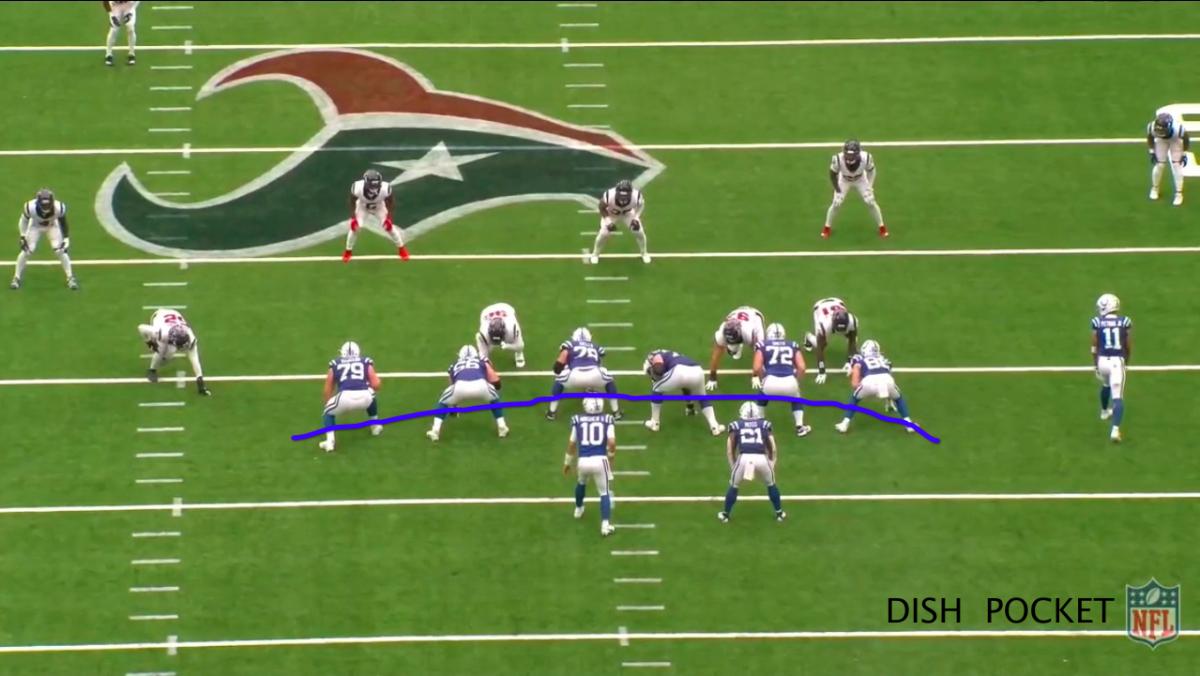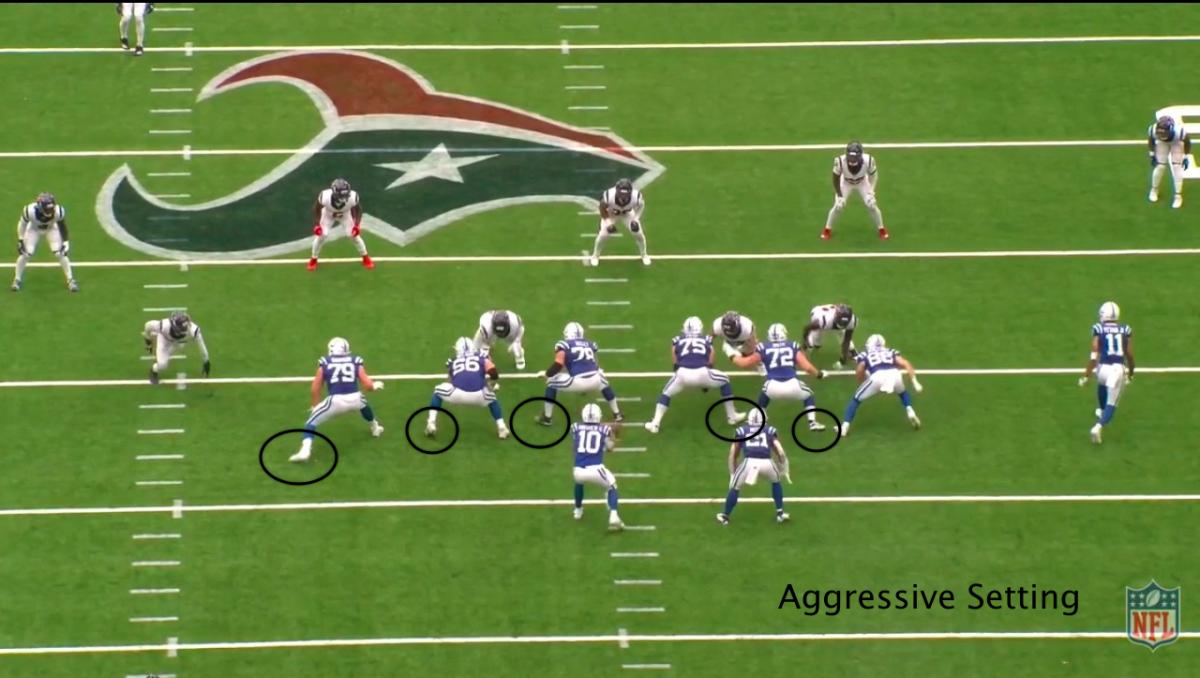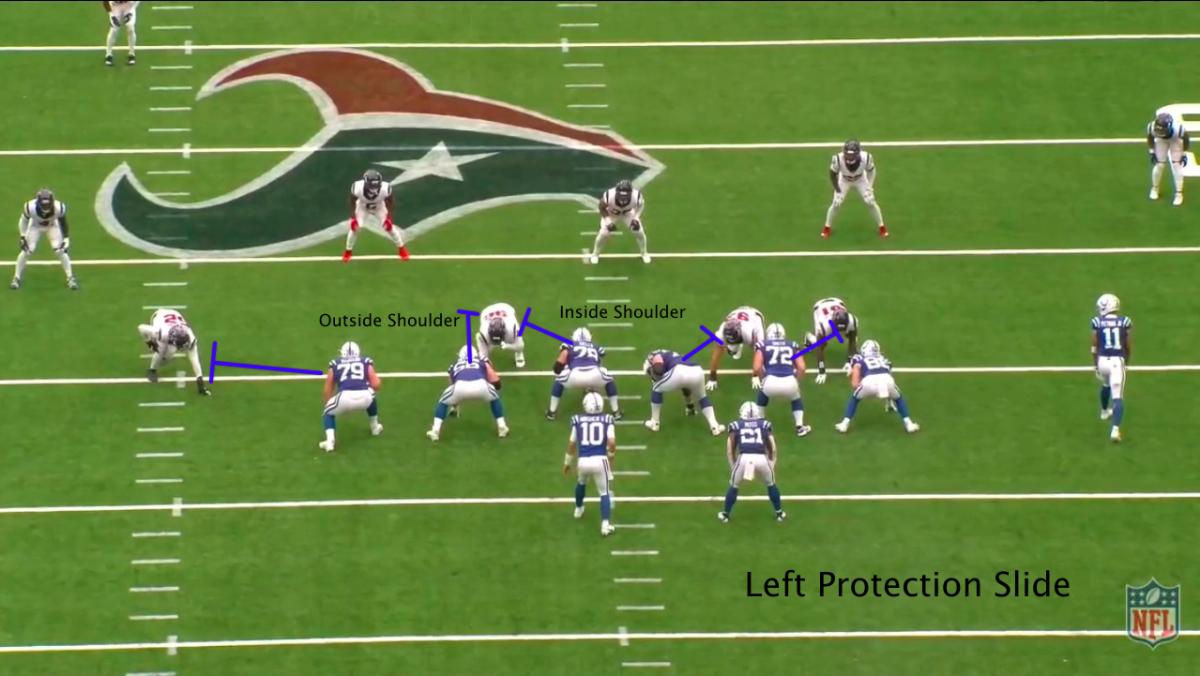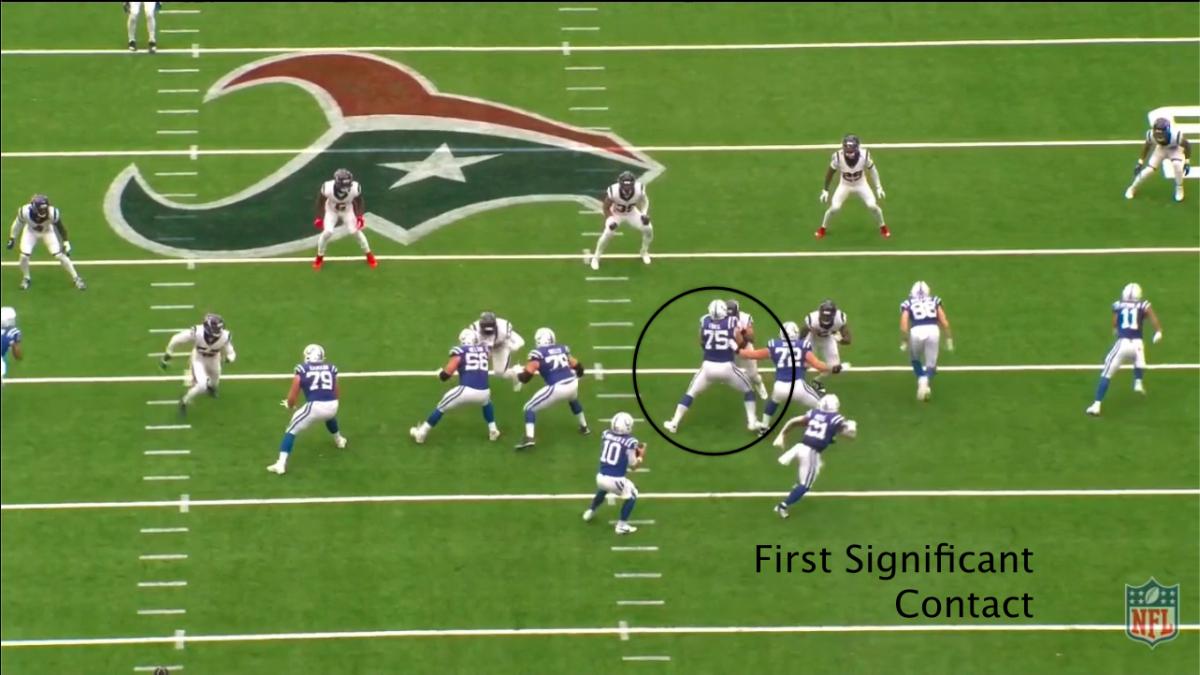Colts Offensive Line Dominant in Win over Texans: Film Room
The Indianapolis Colts' offensive line was an abject disaster in 2022, particularly in pass protection. The team allowed 60 sacks in 17 games, which was the second worst mark in the entire league. So far in 2023 though, the unit appears to be turning things around.
Through two games in 2023, the Colts' offensive line has allowed just four sacks. According to Pro Football Focus, each of those sacks have been attributed to the quarterback, so there isn't a single lineman on the team with an allowed sack so far in PFF's data counting. The Colts are also among the top in the league in QB hits allowed, with Indy only surrendering seven QB hits in two weeks.
This past Sunday may have been the team's best outing in pass protection in years. The Colts' offensive line combined to allow just four pressures and one QB hit (zero sacks) in 36 pass blocking snaps. PFF handed out elite pass blocking grades to Quenton Nelson and Ryan Kelly in this game, while Braden Smith, Bernhard Raimann, and Will Fries all scored above average as well.
The Colts' offensive line simply cruised in this game against a defensive line that simply wasn't up to their level. So today, I figured we could sit back and enjoy a few of the Colts' best pass blocking clips from this past weekend. I'll also dive into how the Colts scheme up protection in detail using the big Will Mallory reception video as a clip to work off of.
How the Colts Scheme Pass Pro
To fully understand the Colts' dominance in pass protection this past Sunday, let's dive into the Colts' pass protection scheme in detail. For some background information, there are two major schools of thought when it comes to pass protection; vertical setting and angle setting.
All good offensive line coaches combine these two schools of thought into their philosophy up front, but OL coaches typically have a preference for which style they prefer. Vertical setting is when an offensive tackle gets depth at the snap and gets to a specific landmark vertically behind their start point.
Vertical setting is typically what is taught at most levels of football but some coaches prefer angle setting in pass protection. Angle setting is a slightly more aggressive (and risky) style of pass pro. In angle setting, the offensive lineman have their first step being at a 45 degree angle rather than vertically backwards.
As you all probably guessed, the Colts are a team that prefers angle setting (and have preferred it since the days of Howard Mudd). Current OL Coach Tony Sparano Jr never worked under Howard Mudd, but a few of his mentors (Pat Meyer, Doug Marrone) are firm believers in this aggressive style of pass protection.
In vertical sets, the goal is to create a tall, narrow pocket for a quarterback to operate from. With angle sets, the goal is to create a dish pocket. Howard Mudd describes the advantage of the dish pocket as "it creates width and allows room for the quarterback to comfortably set and step forward into his throw."
For a screen example of a dish pocket, this is generally what it would look like after the snap:

This next picture will show how aggressive the first step is for the Colts' offensive lineman in this pass protection. Every step is about establishing position from the original starting point, rather than losing ground by vertically setting back to find that new position.
By stepping out at an angle, the Colts are forming the dish pocket that was pictured above. This type of pocket provides multiple escape angles for the quarterback if one player misses a block, as opposed to vertical sets where the pocket naturally closes in around the passer in the backfield.

Now that we know how the Colts call their pass blocking scheme, let's backtrack slightly into slide protection. Prior to each snap, the pass protection will generally slide either to the right or to the left. The factors that go into this decision can be anything from defensive alignment, number of threats to one side, and even the play design itself.
On this particular play, the Texans are in a standard four man rush and aren't selling any extra pressure coming. Due to this, the natural slide on this play will be to the left, as it makes much more sense for the center to help on the nose tackle in the A gap than to assist on the three tech on the right side B gap.
Even though Quenton Nelson is more trusted in a one on one block than Will Fries, Kelly is sliding left in this protection due to that A gap threat to that side:

With this slide to the left though, that leaves right guard Will Fries on an island against the three tech to the right. The Colts do mitigate the potential two way go that Fries is facing by having a tight end to that side (this alleviates the immediate threat that Braden Smith is facing so he can take a tighter angle), but Fries is mostly on his own here.
The way that Indy coaches this scenario is for Fries to be ultra aggressive at the point of attack. There is no giving ground for this isolated lineman, the entire goal is to create first significant contact and control the block from that point on.
Luckily, this plays right into Will Fries' strengths as a player. He is a long and sturdy guard who is at his best when he can get hands on quickly. He takes a super aggressive angle on this block and absorbs the three tech quickly after making first contact:

With Will Fries effectively handling the most vital block in this protection, the rest of the line performs their duties at a high level on this play. Raimann and Smith lock down the outside while the combo block of Kelly and Nelson on the inside is too much for the nose tackle in the A gap.
As a result, Gardner Minshew is able to sit back in a clean pocket and find Will Mallory down the field for a massive gain:
Dominance All Game Long
The clip above was just par for the course for Indy's offensive line in this game. They were in control and simply dominant all afternoon, as the Texans' defensive line was shell shocked in the passing game.
Now that I have given a brief rundown on how the Colts approach pass blocking, watch a few of these clips below with those coaching points in mind. Notice the dish pocket forming on these reps, how the isolated guard is locking it down against the three tech, and how the tackles are attacking these edge rushers with angle sets.
The Colts offensive line pitched a no-hitter this past Sunday, and they were simply perfect in their technique and in their coaching:
The Bottom Line
The Indianapolis Colts' offensive line is in a really good place heading into a tough week four match-up with the Baltimore Ravens. The Colts' starting five is playing strong not only as individuals, but they also look like a cohesive unit again for the first time in years.
I don't want to say that this offensive line is fully back to the dominance that they displayed back from 2018-2020, but the Colts' OL certainly has me excited through two weeks of the 2023 season.
Need your fill on daily Colts' content? Head over to the Locked On Colts' YouTube channel where Jake Arthur and I hit on all the major topics surrounding this team. Hit that subscribe button while you are there!
Follow Horseshoe Huddle on Twitter and Facebook.
Subscribe to Horseshoe Huddle on YouTube for daily Colts live-stream podcasts!
